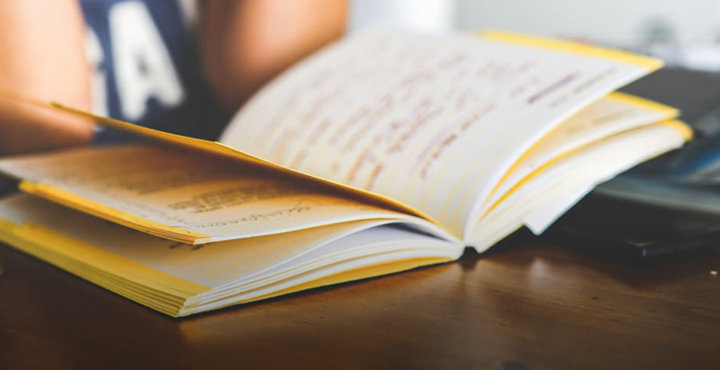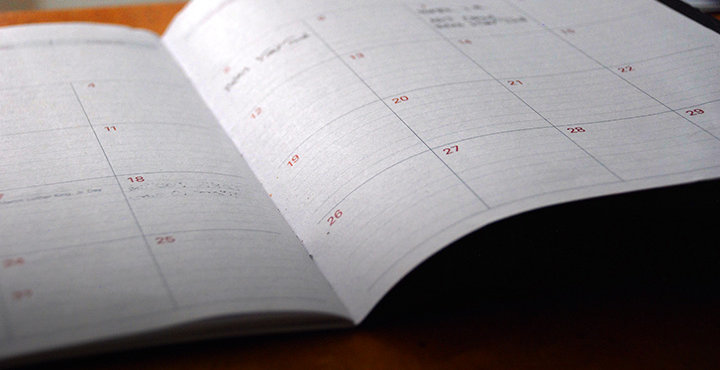We explain the pre-writing steps to writing a book report
Writing a book report can be a difficult task that requires you to deal with a large amount of information in a relatively small space. But don't be discouraged—in this article we outline how to prepare for your book report and in our later article we discuss how to write report on a book.
Tips for taking notes
Before you can sit down to write a book report, you must first read the required novel. As you read, remember to take notes on each chapter of the book. Simply reading the book and then writing your book report will likely result in a poorly organized assignment and a lot of flipping pages back and forth to find information. College book reports or essays are different from high school literary assignments in the sense that while you will be summarizing the text to some extent, you'll also be required to deal with the book on a meaningful level (i.e., interpret or extract meaning from the events of the story). For this reason, noting the following important elements in each chapter (as you read and before you begin to write) is highly important:
Main characters and their actions
While you don't need to write down every single thing that a character does, it's important to notice patterns of behavior across the entire arc of the story. Let's say you note that, in Chapter 1, the main character robs a convenience store because the owner fired him. Later, in Chapter 7, the same character slashes the tires of his neighbor's car because she parked in his parking space. While you wouldn't necessarily have to mention these two specific details in the book report, your careful examination of this character's actions allows you to call him "vindictive" in your report and have the proof to back it up.
The setting
Just as with noting the main characters and their actions, taking notice of settings will allow you to uncover patterns throughout the story. Perhaps you note that Chapters 1 through 3 take place in Brooklyn, and then in Chapter 4, a new character that lives in Tempe is introduced. As the story progresses, the character from Brooklyn makes his way to Columbus, Des Moines, and finally to Salem. Likewise, the character in Tempe travels to Santa Fe, Salt Lake City, and Boise before reaching Salem and reuniting with our first character. In your report, it's probably unnecessary to mention all of these cities. However, your examination of patterns throughout the plot of the story could lead you to report that two characters, one from New York City and the other from Tempe, reunite in Salem.
Events
This one is quite simple. You should be writing down at least one noteworthy event from each chapter of the book.
Symbols and symbolism
Symbols are tricky. It can be said that symbols/symbolism are what ultimately allow readers to make meaning from a story that spans hundreds of pages. For example, in Dylan Thomas's "Do not go gentle into that good night," references to the "close of day" and "night" are generally deemed, by scholars, to be symbolic representations of death. Another example that everyone is familiar with is a red rose, which generally symbolizes love. Noting symbols in stories takes some practice, but this is what will ultimately make your book report stand out. If a symbol repeats throughout a story, it's likely not accidental; the author wants the readers to extract some sort of meaning from this symbol. If you can do this, you will likely receive a better grade than those who ignore this admittedly difficult point. If you think you've come upon a symbolic element in a story, we recommend asking yourself the following questions: How does this symbol relate to the actions of the characters and the events in the story? Does this symbol help explain an aspect of a character's personality or an event in the story? If so, how is this accomplished? Do any events in the story mirror real-life events? Do any characters mirror real-life people who are in the public eye? If so, what is the author trying to say by doing this? Finally, remember that symbols are useless unless related to the events and characters. Symbols should be considered tools that help you better understand the meaning behind a story.
If you've taken notes correctly, your book should be a little worse for wear when you're done reading it: you should have made notes in it, stuck tabs on noteworthy passages, and/or dog-eared important pages. The book is now yours; you've connected with its contents in a meaningful way and are ready to start organizing your thoughts.
Organize your information into headings
Once you've finished reading the novel, look through your notes and, on a blank piece of paper, write down what you feel are the ten most important elements in the book, in no particular order. Next, take another page and write "Main Characters/Actions," "Setting," "Events," and "Symbols" as headings. Look at your first list and categorize each of your ten elements. This way, you can clearly see if you're ignoring one of the headings. For example, if you notice that you don't have anything under the "Symbols" heading, you'll need to look at your notes and include one or two elements there.
From note-taking to connection-making
Learning how to take good notes, while reading, is an important skill that every student should master. Granted, note-taking will slow your reading process down in the beginning (where you could once speed-read through a 350-page novel in one sitting, it may now take you three or four nights), but ultimately, this will be time well spent. This way, when it comes time to write your book report, you'll be armed with informative ideas and well thought-out interpretations. And remember, if you need a second opinion on your notes, be sure to send your document over to our essay editing services.
Image source: freestocks.org/Pexels.com




